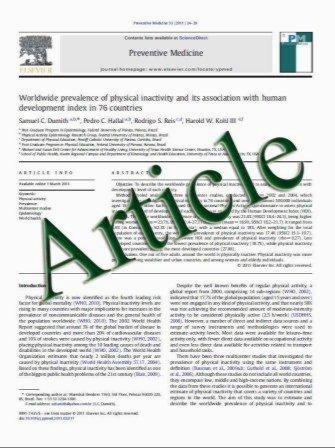Evaluation of microalbuminuria in obese children and its relation to metabolic syndrome
- نوع فایل : کتاب
- زبان : انگلیسی
- مؤلف : Mohammed Sanad & Amal Gharib
- چاپ و سال / کشور: 2011
Description
Several epidemiologic studies have clearly demonstrated that obesity increases the risk of kidney diseases. We have attempted to evaluate the association of obesity with albuminuria, an early marker of kidney disease, among obese children and its relation to metabolic syndrome. This study included 150 obese children. Blood pressure, fasting blood glucose, plasma insulin and the lipid profile were assessed. The homeostasis model assessment of insulin resistance (HOMA-IR) was used to calculate in vivo insulin resistance. Urinary albumin and creatinine were estimated. Microalbuminuria was detected in 22 (14.7%) of the obese children. Waist circumference, blood pressure, triglyceride, low-density lipoprotein (LDL), insulin resistance and fasting blood glucose were significantly higher in obese children with microalbuminuria than in those with normoalbuminuria and showed significant positive correlations with microalbuminuria. High-density lipoprotein (HDL) was significantly lower in obese children with microalbuminuria than in those with normoalbuminuria, with a significant negative correlation with microalbuminuria. We found that body mass index, abdominal obesity, hypertension, impaired fasting glucose level and insulin resistance significantly increased the odds of microalbuminuria in the obese children enrolled in this study. Moreover, high triglyceride, high LDL and low HDL were significantly associated with microalbuminuria. In our patient group, childhood obesity was a risk factor for the development of microalbuminuria, which in turn was significantly associated with metabolic syndrome and its different constituents.
Pediatr Nephrol DOI 10.1007/s00467-011-1931-9 Received: 10 April 2011 / Revised: 12 May 2011 / Accepted: 17 May 2011


